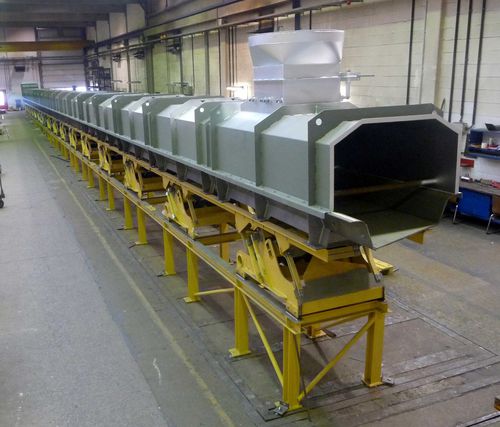Machine dynamics:
A casting cooler is essentially a heavy-duty, mass-compensated resonance conveyor with an airtight hood that is typically installed between the shakeout and the sorting conveyor. An oscillatory system consisting of a trough and working springs with active vibration absorbers at regular intervals is energized at very low frequencies by an eccentric slider-crank drive unit. The machine’s base frame is anchored to the foundation, and the system requires only very little drive power. Since the dynamic restoring forces of the working springs are largely compensated for by the active, mass-compensated system of vibration absorbers, only very low residual dynamic forces are transmitted into the foundation. The castings are conveyed slowly, evenly and quietly through the flow channel without micro throw movements.
Thermodynamics:
An air-mass flow is directed through the channel-shaped cooler in the opposite direction to the flow of the castings and thereby cools them. The basic principle is based on a counterflow heat exchange between the cast iron / air, whereby the total surface area of all the castings currently in the cooler represents the total available heat exchanging surface. In physical terms, counterflow heat exchange is the most efficient and effective method of thermal transfer. To increase the cooling capacity, the machine can be equipped with humidifiers, since the heat transfer is even more effective in humid air.

